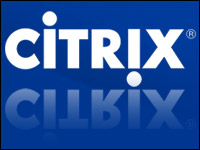
Chipmaker Via Technologies took the wrapper of its OpenBook Mini-Note reference design Tuesday, making the blueprint for its latest ultra mobile PC (UMPC) available to anyone who wants to manufacture low-cost computers based on Via’s line of low-power processors.
The open source, computer-assisted design (CAD) files are available for free here under the Creative Commons Share Alike Attribution license. They’re intended to give manufacturers a template from which they can create a UMPC using Via chips.
The OpenBook reference design release follows a similar move in June 2007 from Via wherein the company made the plans for its Via NanoBook available. It’s part of the chipmaker’s Spearhead Platform Initiative, created to provide original equipment manufacturers (OEMs) with innovative, ready-to-market solutions and reduce development time and costs, according to the company.
“Via has been in the UMPC market way before anyone else, but they have a lot of competition coming up behind right now. It’s a great example of how hardware vendors can leverage the dynamic of the open source development model,” said Charles King, principal analyst at Pund-IT.
Mini PC
With the OpenBook Mini-Note reference design, manufacturers can create a UMPC based on the processor maker’s 1 to 1.6 GHz C7-M ULV processor and VX800 all-in-one digital media IGP chipset. The mini-PC offers a clamshell with an 8.9-inch LED screen supporting up to 1,024 by 600 resolution and DirectX 9.0 3-D graphics.
The 2.2 pound machine supports Microsoft Windows XP, Vista and Linux operating systems and also comes with Bluetooth, WiFi, A-GPS (assisted global positioning system) and Ethernet capabilities. An internal modular interface gives vendors additional flexibility in terms of accessing the Internet with support for WiMax, HSDPA or EV-DO/W-CDMA 3G services.
The plans also allow for a full-sized keyboard, a 2-megapixel camera, an 80 GB hard disk drive, up to 2 GB of DDR memory, a four-in-one memory card reader, two speakers and a four-cell battery with up to three hours of battery life.
“The open source model has been a great development mechanism and tool for many, many companies. It makes perfect sense for a company like Via to try and leverage some of that good will and history to its own benefit,” King told LinuxInsider.
Been Around
Via’s relatively long history in the UMPC space has allowed it to develop processors that are more efficient than the Atom processor, Intel’s entry in the ultra mobile PC processor market, according to King.
“And as vendors look more seriously at entering the UMPC space, they will be looking at a variety of different technologies that can be leveraged into new commercial products. Via has the history and the product performance to make their own solutions, and potentially this open source effort, very attractive and interesting,” he concluded.




















































